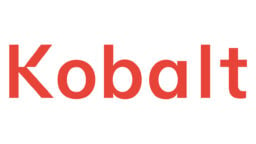Kobalt‘s revenues increased by an impressive 25.6% in FY 2015 to $245.1m – and the firm says it’s on course to become a half-billion dollar company in the next two years.
MBW has taken a deep dive into the much talked-about business’s newly-published financials for the 12 months to the end of June 2015 – with some very interesting results.
They show that Kobalt has doubled its annual revenue figure since FY 2012, a year in which it posted $118m.
It finished FY 2015 strongly, with $90m turnover in the three months to end of June – putting it on course for a FY 2016 turnover well in excess of $300m.
In addition, the business is not laden with any debt, finishing FY 2015 with more than $46m cash in the bank.
“We are on target to double our revenue again in the next two years,” Kobalt CEO Willard Ahdritz told MBW. “I expect to be a half-billion dollar business in [FY 2017] in revenue terms.
“That isn’t bought revenue, but real growth; because people come to us and love our services.”
Perhaps the proudest news for Kobalt is that its publishing division comfortably increased its profitability in FY 2015, with a $5.78m net income compared to a $3.88m profit in FY 2014.
Publishing’s revenues stood at $194.18m last year, up 16.5% on its performance in FY 2014.

Even when additional company-wide ‘common costs’ of $17.28m are split equally four ways – across publishing plus Kobalt’s other three main divisions; Label Services, Neighbouring Rights and collection society AMRA – the publishing division remains profitable to the tune of $1.5m.
Common costs aside, Kobalt’s neighbouring rights division also turned a profit for the first time, albeit it slender one: $935,000 on revenues of $20.86m (+127%).
There were losses across the whole of the Kobalt group, however – a $24.5m operating loss widening to $27.3m after tax.
Speaking to MBW, Ahdritz pointed out that around $8.5m of these costs were non-cash items; mainly stock options for staff and investors.
Kobalt’s rivals will be interested to hear his other main reasoning for the losses: essentially, that his fast-growing company is treating a number of divisions as startups, investing heavily without the burden of profitability watchdogs on his board.
And get this: Ahdritz says that at its current trajectory, Kobalt – across all of its companies – is on course to break even in two years time, in FY 2017.
That is, however, if the company doesn’t make any more big investment bets before then.
Ahdritz, unsurprisingly, is tempted to suggest it will.
“I’m very excited. we have some of the biggest and best tech investors – for a reason.”
Willard Ahdritz, Kobalt
“Everything is going according to plan,” he said. “I’m very excited. We have some of the biggest and best tech investors on our board for a reason.”
Those board members include representatives from headline Kobalt investors such as MSD [Michael S Dell] Capital and Balderton Capital, amongst others.
Kobalt took on a further $60m in investment in FY 2015, mainly from Google Ventures.
This helped pay for new enterprises including AMRA and Kobalt Music Capital – an independent fund which has made music rights investments of over $87m so far.
“Please notice that we’re not taking any investment to burn it,” added Ahdritz, referring to the practice of bailing out a company by taking on third-party money.
“It’s all spent on growth.”

AMRA, Kobalt’s collection society, officially launched in June 2015; the final month of the fiscal year represented here.
It brought in $967,000 to Kobalt in the FY, while posting a $5.6m loss – the purest example of the ‘startup’ investment Ahdritz describes.
We won’t get a fair reflection of AMRA’s performance as a company until its first full year, which will be reported in Kobalt’s FY 2016 results in 12 months’ time.
The division of Kobalt that posted the heaviest loss was KLS, aka Kobalt Label Services, which also encompasses AWAL.
KLS, which is yet to turn an annual profit even when common costs are removed, recorded an $8.4m loss in FY 2015 on revenues of $29.05m.
Ahdritz admitted that KLS suffered from an uncommonly light release schedule last year, partly due to the slippage of a couple of major records, but said it was “now full speed ahead once again”.







